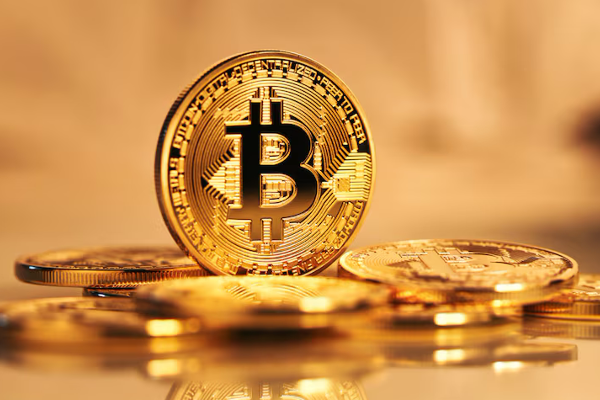Risks and Regulation of Cryptocurrency Trading Platforms: US Practice and Its Implications

Cryptocurrency trading platforms are the center of financial risk accumulation and the main place for money laundering and fraud crimes. The wildly growing trading platforms have caused huge damage to investors from all countries and seriously disrupted the market order. It is urgent to establish a sound regulatory policy. A comparative study found that the United States has established a relatively comprehensive regulatory mechanism at the federal and state government levels, actively preventing five major risks of hacker intrusion, money laundering crimes, platform fraud, insider trading and market manipulation, and user fund losses, and has achieved strong law enforcement in the fields of securities, commodity futures and payments. Reflecting on the experience and shortcomings of the United States, Chinese regulators can establish a platform registration system, strengthen platform information disclosure, emphasize the platform's anti-money laundering regulatory obligations and fund security obligations, implement financial rectification work, refer to and adjust the existing regulatory approach, and protect the legitimate rights and interests of investors while achieving the goal of maintaining the security of the financial market.
I. Introduction
Cryptocurrency represented by Bitcoin is the key point of the combination of blockchain technology and finance. It exists in the financial market in a non-physical digital form and is also called "virtual currency" or "crypto assets." Many investors rushed into the market due to the wealth effect of cryptocurrencies, and the market size expanded rapidly, giving rise to centralized platforms that provide trading services for cryptocurrencies. Most of the top trading platforms (such as Coinbase, Binance and EuroEasy, etc.) formulate platform rules to maintain market order, and are also responsible for price discovery, order matching and settlement custody services. Trading platforms often go beyond the scope of "intermediaries" and integrate market regulators, participants and service providers.
The platform business is complex, and different risks overlap in the same entity, making it the core of the risk in the crypto market. The confusion of multiple functions can easily lead to theft by trading platforms. Not only may the platform fail to maintain market order, but it may also harm the rights and interests of investors when seeking huge profits. From a global perspective, factors such as the lack of public power supervision and platform security loopholes increase the risks of trading platforms and aggravate market turmoil. In November 2022, FTX, once known as the "world's second largest trading platform", fell from the altar due to factors such as misappropriation of customer funds and market manipulation. More than one million users faced the dilemma of being unable to withdraw cash, and nearly $1.8 billion in assets were wiped out. Many platform shareholders and chain game project companies were implicated, and the amount of losses also reached hundreds of millions of dollars. This risk event caused a huge shock in the industry. Many governments once again became alert to the risks of trading platforms and gradually realized that trading platforms are the center of the storm that cannot be ignored.
In order to deal with the financial risks related to cryptocurrencies, my country has continuously tightened its regulatory policies since 2013, clarifying the "high-voltage line" involving cryptocurrency transactions and illegal financial activities. In September 2017, the People's Bank of China and seven other ministries and commissions jointly issued the "Announcement on Preventing the Risks of Token Issuance and Financing", prohibiting ICO-style financing activities and the opening of cryptocurrency trading platforms. In September 2021, the People's Bank of China and ten other ministries and commissions issued the "Notice on Further Preventing and Dealing with the Risks of Virtual Currency Trading Speculation", reiterating the above provisions and prohibiting criminal activities such as money laundering, illegal operations, and financial fraud that may be involved in cryptocurrencies. After severe rectification, a confusing phenomenon has emerged in practice: In theory, there is no cryptocurrency trading platform in my country, but in recent years, public security organs have found that domestic cryptocurrency transactions and related crimes are frequent and high. In 2021, my country cracked 259 related cases and seized cryptocurrencies with a total value of more than 11 billion yuan. In December 2022, the Chinese police arrested a money laundering gang that used the Internet blockchain to exchange digital cryptocurrencies. The amount of money laundering by this gang alone was as high as 12 billion yuan. The above signs show that the "ban-type" regulatory policy can deal with the risks of domestic platforms in the short term, but it has not completely extinguished the domestic "cryptocurrency craze" (Deng Jianpeng and Ma Wenjie, 2022). Underground trading platforms are still secretly providing cryptocurrency trading services. In addition, although subject to the ban on opening trading-related websites in China, the platform has moved overseas and continued to be open to Chinese citizens. The "ban-type" regulatory policy plays an "expulsion" role and cannot stop the global transmission of platform risks. The effect of campaign-style financial rectification work is easy to rebound, causing my country to fall into a cycle of governance and chaos (Tang Shiya, 2022). Therefore, in the current dilemma of limited regulatory effects, the regulation of trading platform risks is still an important task for Chinese regulators, and how to achieve effective supervision is also a key topic that scholars urgently need to study.
As far as the author can see, only a few scholars have focused on the regulation of trading platforms in recent years. Some researchers have summarized the main risks of the platform as automatic trading risk, high-frequency trading risk, network risk, and systemic risk (Johnson, 2021), and proposed that trading platforms should carry out self-regulation under the guidance of the government, and formulate regulatory rules for the basic business of intermediaries, investor protection on the capital side, and information disclosure on the asset side (Zhang Chao, 2020). Although the above research is quite inspiring, some regulatory suggestions are not very operational and cannot fully respond to the risks of the platform. The depth and breadth of the research need to be improved. At present, the mainstream research related to cryptocurrency focuses on exploring its legal attributes, securities supervision and anti-money laundering crimes (Zhao Ying, 2021). Although some scholars point out that trading platforms are an important tool for cryptocurrency supervision (Wang Yanchuan, 2020), and that platforms have insider trading, pyramid schemes, and illegal fundraising (Ma Yongqiang, 2022), Chinese regulators can learn from foreign experience and establish a strict market access system based on the US regulatory experience (Zhang Tianxing, 2019), requiring platforms to fulfill their anti-money laundering obligations (Li Min, 2022). However, most studies roughly point out that platforms are extremely risky, and do not specifically analyze the specific content of their risks in depth. Some scholars focus on combing the regulatory experience of the United States in the fields of securities and money laundering (Zhao Binghao, 2020; Johnson, 2020), but most of them tend to be introductory studies. Only a few scholars point out that the US regulation has the defects of uncertain rules and overlapping jurisdiction (Goforth, 2021). Most studies have not carefully examined and reflected on foreign regulatory experience, and the regulatory countermeasures proposed are too abstract and lack pertinence. Therefore, this article will deepen the analysis of trading platform risks, combine actual cases, explain the causes of various risks, and enhance the understanding of platform risks. In addition, this article will deeply analyze the regulatory system of the United States on trading platforms, focus on the actual quality, experience and lessons of U.S. regulation, and put forward more feasible and specific regulatory suggestions.
This article intends to focus on the U.S. regulatory experience, because the United States has better regulation in the field of cryptocurrency (Eakeley et al., 2020). In addition to having relatively complete regulatory rules, the enforcement is also stronger than other financial centers (Jackson, 2007). Its regulatory trial and error over the years contains important inspirations and lessons, and has become a model for countries to learn or reflect. The United States ranked third in the world in terms of cryptocurrency trading volume in 2022. It is an important market with a huge economic scale and highly concentrated risks. For China, which also has a huge market size, the United States is more suitable as a research and reference object for my country than other countries. Since the risks of centralized platforms are the most concentrated, this study focuses on such platforms, and decentralized platforms are not discussed for the time being. The rest of the article is arranged as follows: the second part discusses the risks of cryptocurrency trading platforms, the third part summarizes the US regulatory experience on trading platforms, and the fourth part reflects on the US experience and shortcomings, and uses this as a reference to put forward effective regulatory recommendations.
2. Risk Analysis of Trading Platforms
Cryptocurrency trading platforms can be divided into multiple roles such as exchanges, brokers, and custodial wallet providers according to their functions, and trading business has also crossed over from the payment field to the investment and financing field. Trading platforms often face multiple risk resonances, which can easily bring far-reaching and broad risk fluctuations to the crypto market. Based on years of research and judgment on risk examples in this field, the author believes that among the many risks, the common and major risks are mainly: hacker theft risk, money laundering crime risk, fraud risk, insider trading and market manipulation risk, and user funds being misappropriated.
(I) Hacker attack and theft risk
Hacker attacks and theft of cryptocurrencies are one of the most important risks of the platform. They have a great impact on investors, a wide range of impacts, and great uncertainty. According to statistics, since 2012, at least 47 trading platforms around the world have suffered major hacker attacks, with a cumulative amount of nearly US$2.72 billion stolen. Most platforms have failed to fully recover the stolen assets for several years, causing irreparable losses to users. The most famous incident was the hacker attack on Mt.Gox, a Japanese exchange that once accounted for 70% of the global Bitcoin trading volume in 2014. The exchange said that 100,000 Bitcoins on the platform and 750,000 Bitcoins on the users were stolen, and many investors were unable to withdraw their coins, resulting in a large amount of property losses. Researchers say that platform wallets are extremely attractive to hackers and have become a common "system failure point" (Johnson, 2021). Therefore, an effective way to prevent this should be for trading platforms to actively set up defense tools, regularly check technical vulnerabilities, and ensure the security of platform-hosted wallets. However, some scholars have pointed out that many trading platforms, including Mt.Gox and Poloniex, have network security vulnerabilities (Johnson, 2021), leaving hackers with opportunities to take advantage of. Various negligence and inadequate prevention have caused trading platforms to always be exposed to risk exposure, and investors' funds on the platform are directly threatened by hacker theft.
(II) Risk of money laundering crimes
Cryptocurrency is inherently decentralized and quasi-anonymous, and is often used as the main money laundering tool. Therefore, trading platforms should be the focus of anti-money laundering work. However, many platforms have failed to maintain adequate anti-money laundering responses, lack experience or are unwilling to invest energy and costs in the platform's anti-money laundering links (Comolli & Korver, 2021). The core content of anti-money laundering includes the platform's full understanding of customer information (industry abbreviation "KYC"), preserving customer and transaction information, and providing anti-money laundering reports to financial regulators. Taking Binance and Huobi as examples, a detailed examination of their anti-money laundering rules found that the two trading platforms only set up a simple identity authentication process, did not conduct more stringent due diligence on customers with a higher risk of money laundering, and lacked dynamic monitoring and regular reporting of suspicious activities.
Omissions in platform operation details may lead to the failure of global cryptocurrency anti-money laundering plans, aggravate money laundering crimes, and affect investors' normal transactions. Relevant research and litigation have proved that current trading platforms have outstanding money laundering risks. In October 2021, the National Bureau of Economic Research in the United Kingdom released the latest research showing that among the cryptocurrency exchanges used by users of Hydramarket, the largest dark web market in Eastern Europe, the entities with the largest traffic belong to Binance and Huobi. Researchers call them "non-KYC" entities, which are the main portals for gray activities such as money laundering. In September 2020, Fisco, a well-known Japanese trading platform, pointed out in a lawsuit that after Zaif hackers stole funds from the Fisco platform, they transferred the stolen money to a wallet address controlled by the Binance platform, and therefore believed that hackers were trying to launder money through the Binance trading platform. In addition, in recent years, my country's judicial authorities have repeatedly discovered that criminal gangs rely on well-known platforms to launder money or transfer criminal proceeds, making the platform a major place for money laundering.
(III) Fraud risk
Fraud is rampant in cryptocurrency transactions, and trading platforms are often involved. Scholars believe that there are many network product designs that hide key information or use special technical means to cause users to have cognitive biases and make irrational behaviors. This dark mode and manipulation problem has become one of the focus issues of network platform supervision (Li Qian, 2023). Specifically in the field of cryptocurrency, on the one hand, criminals specifically set up trading platforms to defraud funds, and use "platform rebates" and "trading and advertising arbitrage" to falsely claim sky-high returns to attract investors to buy cryptocurrencies on the platform or participate in activities. Once the trading platform holds enough funds, it will quickly transfer and complete the fraud crime.
On the other hand, fraud risks also come from fraudulent projects on the platform, that is, the platform itself is not involved in fraud, but it deliberately or negligently launches high-risk projects, causing investors' funds to be defrauded by the project party. For example, in April 2018, the U.S. Securities and Exchange Commission (SEC) pointed out that the Centra (CTR) project party fabricated false team information and was an unregistered fraudulent project. The project had been launched on Binance and Ouyi before it was identified as a fraud crime, which made people question the completeness of the token listing rules and review processes of the leading platforms. The "Virtual Market Integrity Initiative Report" issued by the New York State Attorney General's Office once pointed out that the platform's token listing decisions are mostly very subjective. Even if the objective factors of the token project are indeed considered, no stable judgment reasons have been formed. Some scholars have found that the screening mechanisms of various platforms are not transparent, and some voting listing models have no security prevention effect (Chang Ying, 2020). For example, although Binance has announced the listing rules, it frankly stated that there are "no established requirements" for project evaluation and did not emphasize the review requirements for fraud or other illegal acts. At present, the entire industry lacks an open and transparent listing mechanism, and the prevention effect of fraud risks has been significantly weakened.
(IV) Insider trading and market manipulation risks
Trading platforms not only assume the supervisory and management functions of traditional stock exchanges, but can also participate in market transactions on their own or privately. The confusion of roles provides convenience for platforms and employees to use internal information for profit. Such behavior has caused great dissatisfaction among crypto investors, including Coinbase, which has been condemned by users for insider trading for many years. In July 2022, the SEC formally filed a lawsuit, accusing the platform's former product manager of making illegal profits of more than $1.1 million through long-term insider trading. This directly proves that insider trading risks are seriously undermining market order and putting investors in an unfair trading environment.
In addition, there are many manipulation risks in the crypto market. Platforms use huge funds and fabricated information to create false trading quotes and manipulate the rise and fall of cryptocurrency prices. Some scholars have found that an average of 70% of the trading volume reported by unregulated platforms is wash sales. In 2022, the famous American financial magazine "Forbes" published an article, which used quantitative and qualitative analysis methods to comprehensively evaluate 157 trading platforms around the world and found that more than half of the trading volume may be false. Some platforms have very few visitors, but they fabricate huge trading volumes to create the illusion of business prosperity. In addition, trading platforms often collude with others through "pump and dump" plans to drive up the price of coins and then sell them off (Gazi, 2021). These incidents have caused great harm to investors.
Some scholars pointed out that true, accurate and timely information disclosure can increase transaction transparency and reduce improper behavior of trading platforms (Johnson, 2021). However, most leading platforms have not formulated specific information disclosure rules. The current public trading information only involves token sales data, community ecological overview, official website and white paper. Few platforms have timely and dynamic updates on the project party's later operating conditions, or disclose major matters such as project party funds and personnel changes. The lack of a sound information disclosure system for each platform will aggravate investors' information disadvantages and encourage insider trading and market manipulation.
(V) Risk of user funds being misappropriated
Trading platforms provide users with custodial wallet services for the unified custody of users' cryptocurrencies and other assets. Many platforms claim that it is impossible for them to use the assets stored by users in the platform wallets for other purposes. However, as early as 2014, the former head of the Bitcoin trading platform Mt.Gox was accused by the Japanese Procuratorate of transferring customer funds to other companies under his name, resulting in a serious shortage of funds and bankruptcy. In November 2022, FTX was accused of misappropriating user funds to invest in other affiliated companies, which eventually led to the bankruptcy of the exchange. A series of actions by the platform show that there is not enough user funds in its custodial wallet, and the funds deposited by users in the wallet are moved elsewhere by the platform controller, causing heavy losses to many investors.
3. Review and Analysis of U.S. Regulatory Experience
The United States implements multi-level decentralized supervision on domestic cryptocurrency trading platforms: vertically, based on the federal decentralization system, the federal government and state governments each enjoy independent regulatory powers. Both parties independently formulate and implement regulatory policies for trading platforms within their jurisdictions. They have not yet reached a unified regulatory consensus, constituting a "dual track parallel". Specifically, U.S. President Biden signed the "Executive Order on the Responsible Development of Digital Assets" in March 2022, which for the first time clarified the federal government's overall regulatory thinking on cryptocurrencies. Its goals are to protect investor rights, promote financial stability, and combat illegal financial crimes. It requires the Ministry of Finance, the SEC, the Commodity Futures Commission (referred to as "CFTC") and other institutions to jointly supervise and prevent and resolve major risks of the platform. State governments act independently, with some regulators formulating complete and strict regulatory rules (such as New York and California), and some state governments relaxing supervision (such as Wyoming) or not yet forming a clear attitude (such as Pennsylvania). Horizontally, governments at all levels divide regulatory powers in detail within their own regulatory objectives and needs, and formulate differentiated regulatory rules, taking a "multi-pronged approach". For example, the federal government, based on the principle of "penetrating" supervision and functional supervision, assigns the securities supervision business, commodity futures supervision business and money laundering crime law enforcement business of trading platforms to the SEC, CFTC and the Financial Crimes Enforcement Office (FinCEN) under the Ministry of Finance. The agencies cooperate with each other to jointly carry out the supervision of trading platforms. In short, "dual-track multi-head" is the basic model for the United States to manage the risks of trading platforms. The differences in regulatory positions and specific policies at all levels of government have led to regulators being in step with certain risk issues, but having their own considerations in other regulatory areas, which has increased the complexity of risk management work for trading platforms.
(I) Cybersecurity supervision
Hacker attacks have cast a huge shadow on the cryptocurrency market. Although external shocks are the main cause of such risks, the platform's neglect of cybersecurity is also an important reason for exacerbating the risks. For this reason, US regulators require platforms to shoulder network security work to prevent hacker damage. At the federal level, both the SEC and the CFTC have proposed that platforms and employees should perform cybersecurity risk management and disclosure work, and establish an accountability mechanism for platform omissions. At the state government level, the New York State Virtual Currency License Regulations stipulate that service providers that provide cryptocurrency transactions must establish and maintain an effective network security system to ensure that the platform will not be attacked by illegal access, data leakage, virus software and other network attacks, and submit network security reports to regulators on a regular basis.
From the perspective of regulatory effectiveness, many federal government policies are still in the stage of soliciting opinions and discussions, and no final regulatory rules have been formed yet, and the risk governance process is lagging behind. In contrast, some state governments have promptly carried out law enforcement actions, imposed high fines on platforms that fail to fulfill their network security obligations, and urged platforms to fulfill their transaction monitoring obligations in accordance with the law and improve their network security plans.
(II) Anti-money laundering supervision
Money laundering can easily promote more serious upstream and downstream criminal activities and is one of the financial crimes that countries have severely cracked down on. The overly loose management systems of most platforms facilitate money laundering activities and objectively give rise to criminal risks. The federal level attaches great importance to the platform's anti-money laundering supervision. Congress has repeatedly promoted the establishment of an anti-money laundering system and carried out law enforcement actions. Specialized agencies, mainly FinCEN, play an important role in updating and implementing regulatory policies. From the federal law and the various rules issued by FinCEN, there are several important tasks throughout the anti-money laundering work of trading platforms: First, trading platforms that meet the definition of "money service providers" must register with FinCEN as anti-money laundering obligors; second, trading platforms should fulfill basic anti-money laundering obligations, including conducting customer investigations, anti-money laundering reports, and suspicious activity monitoring; third, considering the quasi-anonymity and cross-border nature of cryptocurrencies, trading platforms need to implement higher anti-money laundering policies than traditional financial institutions. For example, the International Financial Action Task Force on Money Laundering (FATF) stipulates that traditional financial institutions must conduct customer due diligence on all orders with a transaction amount exceeding US$15,000/EUR. In the field of cryptocurrency, FinCEN reduces the risk threshold to US$3,000 and requires platforms to monitor more trading accounts with potential money laundering risks. Some state governments conduct regulatory work on platforms. For example, New York and California require platforms to establish specific anti-money laundering rules, report anti-money laundering results to regulators in writing on a regular basis, and designate specialists to be responsible for platform anti-money laundering work.
The US government has achieved relatively significant law enforcement results in this field. As leading institutions in this field, FinCEN and the New York State Department of Financial Services have respectively imposed bans on trading platforms suspected of money laundering crimes, imposed high fines, and required the platforms to take appropriate anti-money laundering measures. FinCEN actively cooperates with other departments in law enforcement activities to arrest and severely punish platform operators who deliberately violate US anti-money laundering regulations. FinCEN's law enforcement deterrence is continuing to extend overseas, fully safeguarding the legitimate rights and interests of American citizens through "long-arm jurisdiction" and responding to the dilemma of platforms using overseas identities to evade supervision.
(III) Fraud risk supervision
After experiencing many fraud incidents on trading platforms, both the federal government and state governments attach great importance to preventing fraud risks on platforms. First, based on the nature of cryptocurrencies and the functions of trading platforms, the SEC and CFTC are responsible for securities trading supervision and commodity futures trading supervision. The fraud risk control systems of the two major institutions are divided into three stages: pre-entry, in-process monitoring, and post-event disposal. In the pre-entry stage, the SEC and CFTC respectively require domestic platforms or overseas platforms that provide services to US citizens to register with exchanges to prevent some "fraudulent operators" from entering the market. In the monitoring phase, the SEC has set up an educational website "Investor" and a fraud complaint channel for securities investors, and jointly with the CFTC issued an alert to investors, urging them to identify platform fraud. In the post-processing phase, when a platform is found to be suspected of fraud, the SEC and the CFTC will respectively conduct law enforcement investigations on the platform, impose huge fines and file lawsuits in local courts. In many law enforcement activities, the SEC has set up fines as a "fairness fund" to compensate investors for losses in trading.
Secondly, state governments have also made many contributions to combating platform fraud crimes. First, some state governments have set up a "license system" or "exchange registration system" in the access phase, requiring trading platforms to take additional anti-fraud measures and formulate anti-fraud plans. Second, some state regulators have investigated or filed lawsuits against fraudulent platforms. For example, the New York and Texas governments have both revoked the trading qualifications of fraudulent platforms in their states, sentenced the platforms to return funds and pay fines.
(IV) Supervision of insider trading and market manipulation
Insider trading and market manipulation are prominent illegal acts in the trading market. More and more leading platforms have been accused of fabricating active trading appearances or artificially controlling cryptocurrency trading prices. In this regard, the federal government focuses on applying the information disclosure system to trading platforms, improving the transparency of the trading market, and curbing insider trading and market manipulation. For example, the SEC consciously emphasized at the market access stage that trading platforms must formulate reasonable policies and procedures to prevent the abuse of important non-public information and submit information disclosure reports to regulators. State regulators have also issued announcements requiring platforms operating in their states to identify and assess possible market manipulation risks in advance and formulate effective control measures and procedures. From a practical perspective, regulators at all levels also take effective ex post punishment measures, including proactive investigation, punishment, and prosecution of trading platforms or related staff suspected of market manipulation.
(V) Fund security supervision
In order to prohibit platforms from misappropriating customer funds, the SEC is gradually issuing relevant regulatory rules, such as the "Employee Accounting Notice" issued in 2022, pointing out that trading platforms should indicate the user's holdings of cryptocurrencies and platform custodial wallets in financial statements. In 2023, the SEC proposed that trading platforms should be included in the category of statutory "custodians", and use federal custody regulations to require platforms to take fund isolation and bankruptcy isolation measures. At the state government level, New York State is a representative example, stipulating that trading platforms must maintain sufficient funds to ensure the integrity of user assets and must not sell, transfer or otherwise use assets on behalf of others. After the FTX incident, the New York State Department of Financial Services issued a cryptocurrency bankruptcy supervision guide, proposing more detailed customer asset isolation and separate accounting requirements, and warning trading platforms to strictly implement a fund isolation system. However, compared with its outstanding performance in anti-money laundering, fraud, insider trading and other fields, US regulators are still in the early stages of supervision of user fund security, and whether its regulatory rules are comprehensive and can be implemented remains to be considered.
IV. Reflections and inspirations from the regulatory practices of the United States
(I) Reflections on the pros and cons of U.S. regulation
First, the effectiveness and comprehensiveness of regulatory rules need to be considered. The U.S. government generally holds an open, inclusive and proactive regulatory attitude. When dealing with the risks of fraud, manipulation, insider trading and money laundering, it allows each regulatory agency to conduct ex ante supervision based on its own definition of the attributes of cryptocurrencies, in accordance with the Securities Act, the Commodity Exchange Act and the Bank Secrecy Act, with different licensing and registration systems as the core, to prevent illegal platforms from entering the market. After the platform is registered or exempted from operation in accordance with the law, the regulatory agency requires the platform to report trading activities regularly, update trading dynamics in a timely manner, and strengthen in-process supervision. In terms of network security and fund security, some regulatory agencies require platforms to protect network systems from hacker intrusion, formulate security plans in advance, report network security risks regularly, pay attention to the isolation of platform funds when entrusting user funds, and disclose the status of escrow wallet funds in a timely manner.
However, in terms of the effectiveness of regulatory rules, a careful examination of the details shows that although regulatory work has a blocking effect on common risks such as fraud and manipulation, it often forces platform operators and the market to make unnecessary sacrifices in practice, and the quality and effectiveness of supervision are greatly reduced in the long run. Regulators, mainly the SEC and CFTC, focus on information disclosure, but some scholars point out that most of the information required by the SEC to be disclosed does not seem to be directly related to the main interests of investors (Goforth, 2021). These disclosures of information that are irrelevant to investors will increase investors' "search costs" and drown out truly useful information (Xing Huiqiang, 2018). At the same time, it adds heavy obligations to the platform, causing operators to be overwhelmed and choose to flee to other jurisdictions.
In addition, the comprehensiveness of regulatory rules needs to be improved. For example, the federal government has not yet formed an orderly regulatory path for platform network security, and regulatory documents are still in a state of readiness and cannot be used as a basis for law enforcement. Regarding the security of platform customers' funds, the SEC issued an employee accounting announcement requiring that the platform reflect user assets on the balance sheet, but the announcement cannot force the platform to isolate accounts. If only resorting to existing regulations, it is impossible to completely prevent the risk of platform misappropriation of funds.
Secondly, there are obvious deficiencies in the US multiple regulatory model. The regulation of trading platforms presents a "functional" feature, that is, regulators are not troubled by the commercial form of platforms and token projects, and use functions as regulatory guidelines, clarify the legal role of platforms based on actual financial activities, and determine the ownership of regulatory rights based on the specific business of the platform. The functional regulatory model, coupled with the long-standing "decentralized governance" in the United States, has led to too many federal and state agencies engaging in platform regulation.
Multiple financial regulators ensure that the tentacles of public power can extend to every corner of the platform, but the "fragmented" regulatory model will sometimes lead to difficulties, especially in the problem of regulatory overlap between the SEC and the CFTC. In practice, a trading platform called "1pool" was sued by the SEC and CFTC in September 2018 for mixed securities and futures trading. Both parties required the platform to fulfill its registration obligations as a securities dealer and futures commission merchant and stop illegal operations. Overlapping supervision means that multiple regulators are involved in risk regulation, and the number of regulatory links has increased significantly, consuming additional human and material resources. Scholars point out that the sharp increase in regulatory costs occurs especially when both agencies are actively regulating in the same field (Aagaard, 2011). Therefore, the SEC and CFTC are prone to duplicate efforts in information disclosure, major event reporting and other work of trading platforms, increasing regulatory costs and causing waste of regulatory resources (Goforth, 2021).
Finally, there is controversy over the rationality of the US long-arm regulation. It is extremely difficult for a single country to enforce the law on trading platforms that provide global services, but in recent years, US regulators are overcoming geographical barriers to implement long-term supervision on platforms around the world, and some platforms or projects registered outside the United States have been targeted by US law enforcement. First of all, jurisdiction is the premise of judicial and law enforcement. Tracing back to the provisions of federal laws such as the Securities Exchange Act and the Bank Secrecy Act, the United States uses the principle of "minimum contact" to find the connection point between the country's judicial organs and conflicts in combating securities fraud, anti-money laundering, and preventing financial risks (He Zhipeng, 2022). The US judicial authorities have jurisdiction over all disputes related to the country. This "long-arm jurisdiction" has extended from the judicial field to the law enforcement field. Both the SEC and FinCEN can supervise overseas platforms that serve US citizens. Secondly, in the field of cross-border payments, the international financial market relies heavily on the Society for Worldwide Interbank Financial Telecommunication (SWIFT) and the New York Clearing House Interbank Payments System (CHIPS). The former is deeply influenced by the US government, and the latter is developed by the United States and is an important tool for the United States to exercise long-arm law enforcement jurisdiction (Yuan Zeng, 2021). Therefore, US regulators attack overseas illegal trading platforms. In addition to freezing and seizing the platform's assets in the United States and arresting platform staff in the United States, they can also restrict the platform from carrying out payment and clearing activities through the global cross-border payment system to deter the platform.
Admittedly, the Internet has weakened people's "territoriality". It is not realistic to use only the "physical address" as the jurisdiction connection point. It is necessary to consider the inherent connection between the defendant and the court location to adapt to the characteristics and pain points of Internet cases (Guo Yujun and Xiang Zaisheng, 2002). Long-arm jurisdiction provides a basis and conditions for cross-border law enforcement by sovereign states, which is conducive to combating illegal activities of overseas trading platforms and protecting the rights and interests of investors. However, this concept aims to expand domestic jurisdiction to the whole world as much as possible, breaking through the scope of national sovereignty. In litigation activities, US regulators expand extraterritorial jurisdiction and create jurisdictional grounds based on only weak connections, which will cause international jurisdiction conflicts (Xiao Yongping, 2019). Unrestricted extraterritorial jurisdiction is bound to harm the sovereignty and integrity of other countries, especially when the litigation has little connection with the country, it is even more inconvenient for the United States to intervene in judicial activities. Therefore, on the one hand, we should affirm the significance of long-arm jurisdiction for platform risk governance, and on the other hand, we should be vigilant against the abuse of power by US regulators, resist and warn against malicious extraterritorial law enforcement, and think about how to make the long-arm jurisdiction system produce good results in the regulation of trading platforms.
(II) Thoughts on the governance of trading platform risks
Today's crypto market is still in rapid development and has not yet been finalized. Regulators are particularly prone to a dilemma between risk correction and promoting innovation. Simply prohibiting the existence of platforms and eliminating the surface crisis emerging in the market cannot prevent the undercurrent of overseas or underground trading platforms. Overly optimistic encouragement of the crypto trading market can maximize the potential of blockchain technology, but it cannot timely resist the risks of the platform. How to seek a more stable and responsible development path, the regulatory experience of the United States can provide some inspiration for the risk control of my country's trading platforms.
First, re-examine the existence value and regulatory necessity of trading platforms. Cryptocurrency is the cornerstone of building a blockchain economic incentive system. The core of the incentive system is to encourage "miners" (such as individuals or institutions that operate and maintain the Bitcoin blockchain system with dedicated computer equipment and record the generated new blocks), investment institutions and blockchain core technology development teams to jointly promote the operation and development of the blockchain system through reasonable cryptocurrency issuance. On the blockchain, a value transmission network, cryptocurrency defines the rights and responsibilities of each participant in the blockchain system, builds an economic system that can be dynamically adjusted and continuously operated, and the incentive carrier is the native cryptocurrency of the system. A blockchain without cryptocurrency is just a distributed database, while a blockchain system with an incentive system will gain the driving force for self-development, derive new business models, and become an important development direction of blockchain. Therefore, regulators should realize that cryptocurrency is the driving force for the sustainable development of blockchain technology, and trading platforms will exist as industry infrastructure for a long time.
In recent years, some financially developed countries or regions have planned to reshape or improve the regulatory rules for cryptocurrency trading platforms and create dynamic and diligent regulatory entities. For example, in October 2022, the European Parliament Committee passed the Crypto-Asset Market Regulation Act. In November 2022, Hong Kong, China included cryptocurrency trading platforms in compliance supervision, issued licenses to legally operating trading platforms, and further disclosed the application list and warning list of cryptocurrency platforms to the public in 2023, actively promoting the implementation of regulatory policies. In March 2022, the U.S. federal government clearly emphasized in the "Executive Order on the Responsible Development of Digital Assets" that cryptocurrency has promoted cutting-edge technological innovation in the United States and provided investors with efficient and low-cost inclusive financial channels. Therefore, it requires government departments to coordinate and cooperate, analyze digital asset risks, strengthen risk supervision of trading platforms, and ensure the United States' international leadership to ensure that cryptocurrencies can operate and develop smoothly in the United States. The above regulatory dynamics show that in addition to responding to risks, financially developed countries or regions are aware of the important significance of cryptocurrency in promoting blockchain technology and driving innovation, and are trying to play a leading role in the global governance of cryptocurrency through effective regulatory practices. Therefore, excessive exclusion of public chain technology and incentive carriers may weaken my country's competitiveness in the field of financial technology.
In addition, as mentioned above, in the face of new overseas regulatory trends and emerging risks, simply "exclusion" may not be a good strategy, and may even force traders to flock to decentralized exchanges (such as Uniswap) and overseas platforms that are not regulated by China. The former is decentralized and censorship-resistant, posing a huge challenge to regulation, while the latter is not within the scope of Chinese regulation. In the long run, avoiding a simple "one-size-fits-all" ban on the platform, moderately adjusting the regulatory strategy, increasing regulatory flexibility, and absorbing excellent regulatory experience from overseas (Liu Mengfei and Luo Xiaowei, 2022) will help the Chinese market keep up with the pace of financial innovation in a timely manner and reserve interfaces for embracing public chains and cutting-edge blockchain technologies in the future.
Second, formulate a comprehensive and unified regulatory framework for trading platforms. For platforms, Chinese regulators can focus on adapting to the development of blockchain technology, optimizing platform governance methods, and implementing refined risk supervision in the future (Sun Jin, 2023). First, explore the platform registration system, combine the existing legal provisions in the fields of securities and futures, establish a registration and licensing system for cryptocurrency exchanges, brokers, and clearing institutions, and implement higher standards for auditing platforms with mixed operations. This measure is conducive to screening out suspected fraudulent trading platforms at the market entry stage and eliminating some fraud risks. Secondly, establish an appropriate platform information disclosure system, enhance market information transparency, and prevent improper business practices such as insider trading and market manipulation. In addition to requiring platforms to submit platform information during the registration process, platforms need to submit financial and operating reports to regulatory authorities on a regular basis, and establish a special information disclosure section within the platform for investors to review in a timely manner. The platform shall bear the responsibility for reviewing the authenticity and accuracy of transaction information, and shall not set exemption clauses involving information accuracy and timeliness of disclosure. Strengthening the platform's information transparency is a top priority, which will help alleviate the disadvantaged position of investors, but the platform should avoid being burdened with heavy disclosure tasks. Self-regulatory organizations or industry associations can be encouraged to issue disclosure templates to guide the platform to fulfill its information disclosure obligations. Thirdly, clarify the platform's anti-money laundering investigation and reporting obligations, and urge the platform to cooperate with the regulator's anti-money laundering work. Referring to the anti-money laundering regulatory experience of the United States, the main focus of the work of my country's regulators is: on the one hand, timely include the platform in the scope of the subject of anti-money laundering obligations; on the other hand, take the platform as the key point of anti-money laundering work, implement anti-money laundering standards higher than ordinary financial institutions for the platform, and strengthen due diligence on suspicious users, such as requiring users to submit additional asset proof materials, face-to-face investigation and interviews, and requiring the platform to submit activity reports to the regulator regularly. Finally, the platform is required to assume the responsibility of customer funds and network security protection, prevent hacker intrusion and platform misappropriation of customer funds. The regulator should force the platform to set up a complete technical risk monitoring system, repair platform vulnerabilities in a timely manner, and prevent hacker intrusion. The platform must submit a written report to explain the user fund isolation measures and compensation plan, and shall not exempt the relevant compensation liability through platform rules.
Third, optimize financial rectification work and improve the level of platform supervision. First, my country's regulators should promptly initiate financial rectification work in the post-event stage, and initiate severe rectification measures for illegal or criminal acts such as large-scale fraud and market manipulation on the platform, including restricting or prohibiting platform operations, clearing trading platforms, and administrative penalties. At the same time, in order to deal with some platforms evading supervision by using their overseas corporate identities, regulators can use the concept of "active jurisdiction" to determine the jurisdiction of judicial and law enforcement agencies over overseas platforms (Liu Jingdong, 2016), increase the supply of extraterritorial judicial systems, and moderately expand law enforcement and regulatory powers overseas, but avoid malicious abuse of "long-arm jurisdiction". Finally, regulators should attach importance to the protection and relief of investors' legitimate rights and interests (Deng Jianpeng and Ma Wenjie, 2023), strengthen the principle of combining punishment with relief, prevent the misunderstanding of "heavy punishment and light relief" (Yao Haifang, 2018), and avoid the separation of operator supervision and investor rights protection. Based on this, while promptly preventing the deterioration of adverse results, regulators should actively compensate investors for their losses and restore investor confidence, such as grafting the US Fair Fund system (Xing Huiqiang, 2016) to compensate platform users with the fines paid by the platform in the form of funds.
Fourth, help cryptocurrency investors reshape the concept of risk prevention and strengthen investor education. The platform has significant risks, involving pain points in multiple fields such as finance, law, and computer technology. Due to the complex knowledge threshold, many non-professional investors find it difficult to accurately understand the risks, and it is not appropriate to allow investors to participate in transactions with speculation and fluke mentality. The SEC has focused on investor education in this field for many years. my country's regulators can refer to its experience to set up a special education website to help investors strengthen their risk prevention awareness and identify trading scams.
V. Conclusion
New forms of business in the field of cryptocurrency are emerging in an endless stream. From Bitcoin to non-fungible tokens (NFTs), the market has undergone multiple reshuffles and iterations, but trading platforms have always played a key role in the field of blockchain finance. Scholars point out that trading platforms determine what crypto assets can be traded on their platforms. The huge trading volume and depth of the head platforms bring price discovery, liquidity, monetization ability, investment value and wealth effect to specific cryptocurrencies (Deng Jianpeng, 2022). In the long run, platforms should become the key "handle" for regulating blockchain finance. As the current chairman of the SEC said, the crypto market is like the "Wild West". The mixture of various functions of the platform brings inherent conflicts of interest and risks to investors, and it must be strictly regulated. my country has taken the lead in striking hard at trading platforms, and has achieved certain results in the short term, but the platform has made a comeback after "going overseas", and the regulatory problem has once again become the focus. The current legal provisions lack systematic regulations on related issues, resulting in laziness and sluggishness in supervision. The refusal of trading platforms to regulate or unilateral bans by the government will damage financial innovation and the development of the blockchain industry. Therefore, the reasonable way of supervision is to promote communication between the two parties, improve relevant rules, and strengthen internal compliance construction of enterprises. Scholars point out that traditional prohibitive supervision has been proven to have little effect (Zhang Chao, 2020). Referring to the rich regulatory experience and lessons of the United States, trying to provide normative guidance to trading platforms and create a regulatory environment that takes into account both risk prevention and innovative development should be the future regulatory solution.









